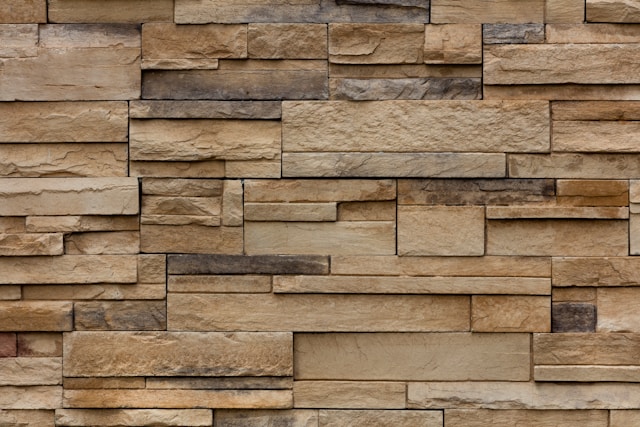
Revolutionizing Residential Spaces: The Impact of Modern Wall Systems on Home Design
Table of Contents:
- Introduction
- Understanding Wall Systems
- Aesthetic Considerations in Wall System Design
- Wall Systems and Energy Efficiency
- Acoustics and Wall Systems in Home Design
- The Costs vs. Benefits of Advanced Wall Systems
- Installation and Maintenance of Modern Wall Systems
Key Takeaways:
- Modern wall systems are altering the landscape of residential design, merging aesthetics with robust functionality.
- Technological advancements have introduced materials that offer improved energy efficiency and sustainability.
- Choosing the suitable wall systems can lead to long-term economic and environmental benefits.
Introduction
The architectural landscape of residential spaces has radically transformed, largely thanks to the incorporation of modern wall systems into home design. Far beyond their traditional roles as mere barriers or support structures, these systems are now pivotal features combining innovative functionality with striking aesthetics. Modern installations, such as sliding glass doors Toronto, redefine living spaces. They promote a harmonious connection between the outdoor environment and interior comfort, impelling a home’s design vocabulary in efficiency and elegance.
As we delve into the specifics of contemporary wall systems, we uncover the manifold aspects that make these structures integral to a home’s stability, ecological footprint, and overall livability. Let’s explore how cutting-edge technologies and design decisions set the stage for a future where homes are places of shelter and comfort and works of art engineered for sustainability and resilience.
Understanding Wall Systems
Wall systems form a residential tower’s foundational “skeleton” beyond the simple division of space or creation of rooms. An intricate compilation of components composes these systems, typically including framing, insulation, and interior and exterior finishing materials. These structured layers collectively contribute to the physical shield of a home—encompassing aspects like thermal regulation, noise cancellation, and aesthetic expression.
The confluence of these elements determines the performance and quality of a wall system, each contributing to the homes’ overall health and efficiency. Materials such as gypsum, insulation foams, and specialized panels play a pivotal role in ensuring that the wall system meets the necessary standards for energy conservation and overall strength.
Aesthetic Considerations in Wall System Design
In refining the concept of wall systems, designers and architects explore the poetic potential of these structures. It’s not just about safeguarding the inhabitants’ comfort or ensuring structural soundness; aesthetics are a testament to the residents’ tastes and lifestyles. Modern wall systems contribute significantly to a home’s interior and exterior look, framing captivating views or creating immersive textures that enhance the spatial experience. Homeowners can express individuality and innovation in their private sanctuaries by choosing materials and colors and incorporating natural elements like glass.
Integrated design features, such as sliding or retractable walls and ceilings, offer a versatile approach to reimagining transitional areas. This approach blurs the distinction between indoor and outdoor spaces, invoking a sense of infinite possibility within a house’s traditionally constrained physical boundaries.
Wall Systems and Energy Efficiency
Energy efficiency remains the gold standard in contemporary home design, and wall systems are at its epicenter. The pivotal role of a wall system’s insulation cannot be overstated. It’s integral to a home’s thermal envelope, maintaining the integrity of the interior climate while mitigating external temperature extremes. The focus on the ‘R-value,’ which measures the material’s resistance to heat flow, is paramount when evaluating the energy performance of a wall system.
Modern wall systems can dramatically reduce energy usage by leveraging high-R-value materials and addressing thermal bridging. This phenomenon transfers heat through more conductive materials in an otherwise insulated space. The result is a comfortable living environment year-round, a meaningful reduction in utility bills, and a positive environmental footprint for the discerning homeowner.
Acoustics and Wall Systems in Home Design
Good acoustics augment the ambiance and privacy of living space, shaping a residence’s overall comfort and enjoyment—something which appropriately designed wall systems can significantly influence. Sound travels in complex ways within a home, and the wall system’s ability to absorb and block noise can determine whether a space feels calm and serene or buzzy and vibrant. This hinges on the materials chosen, such as dense insulation or specialized acoustic panels, which can transform a home into a quiet, peaceful haven.
Effective sound insulation can significantly improve the quality of life, particularly in urban environments or homes close to neighbors. By thoughtfully planning the layout and materials of wall systems, homeowners can curate their auditory experience, ensuring that sound enhances rather than intrudes upon their personal space.
The Costs vs. Benefits of Advanced Wall Systems
Installing sophisticated wall systems in Toronto homes can represent a sizeable investment in the short term, but their long-term benefits often eclipse initial expenses. These systems offer potential for energy savings, reduced environmental impact, and may even increase the property’s market value. Homeowners must weigh the costs against the projected energy cost savings and property valuation when embarking on new construction or renovation projects. It’s a balancing act of initial outlay versus future fiscal returns.
Opting for advanced systems aligns with eco-conscious living standards and contributes to a more comfortable, healthier home environment. It’s a strategic decision that discerning homeowners will find beneficial in more ways than one—monetary savings in the long run, improved quality of life, or contributing to a more sustainable world.
Installation and Maintenance of Modern Wall Systems
Installing state-of-the-art wall systems is intricate work, and its success heavily relies upon the expertise of the builders and a proper understanding of these modern methods. Professional installation ensures seamless integration of the system components and maximizes the functional benefits. Once in place, contemporary wall systems generally require minimal maintenance, thanks to the durability and longevity of the materials used. Nonetheless, regular monitoring and upkeep are essential to maintain the system’s integrity and performance over the years.
Homeowners should know the long-term care required for these systems, including the necessary inspections and occasional adjustments or repairs. Working closely with construction professionals and adhering to maintenance recommendations can forestall the most significant issues, ensuring the wall system continues to perform effectively for years.





